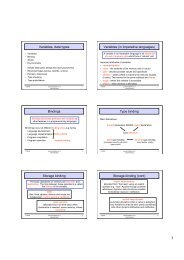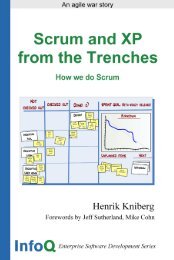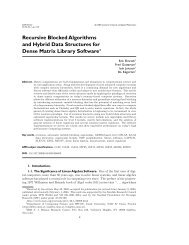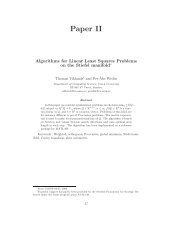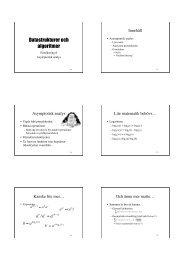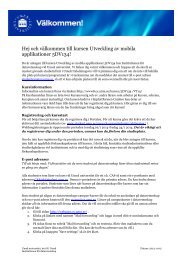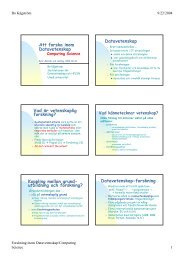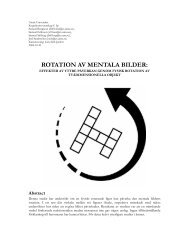Designing a persistent online strategy game - Department of ...
Designing a persistent online strategy game - Department of ...
Designing a persistent online strategy game - Department of ...
You also want an ePaper? Increase the reach of your titles
YUMPU automatically turns print PDFs into web optimized ePapers that Google loves.
24 Chapter 3. Requirements engineering with non-functional requirements<br />
As seen in Figure 3.10 the rating <strong>of</strong> the scale is based upon the agreement or disagreement<br />
to the statement.<br />
When designing Likert scales one must first decide which statements should be evaluated.<br />
A good way <strong>of</strong> doing this is to have a brainstorm session. One also has to decide on<br />
how to phrase the questions, positively or negatively. There is no real consensus on<br />
how this should be done, both entirely negative and positive questionnaires as well as<br />
mixed questionnaires are being used, but it all comes down to the complexity <strong>of</strong> the<br />
questionnaire. If the questionnaire has both negatively and positively phrased questions<br />
it becomes more complex. Finally one must decide which scale to use. Once again<br />
there is no real consensus on which is best, but 5- and 7-point scales are quite common,<br />
though it is possible to use even numbered scales as well. By doing this the neutral<br />
central point is removed and the participants are thus forced to make a decision.<br />
When the design <strong>of</strong> the questionnaire is finished it is just a matter <strong>of</strong> getting participants<br />
to answer it. It is quite common to use small numbers <strong>of</strong> participants and in these<br />
cases it is quite possible to get everyone to fill out the questionnaire. If however more<br />
participants are required there are a few things to think about to get a good return rate.<br />
The most basic is <strong>of</strong> course to have a well designed questionnaire, but here follows some<br />
additional tips [52]:<br />
– Provide a short overview section to make sure that at least some information is<br />
returned.<br />
– If the questionnaire has to be returned by mail, include a self-addressed and<br />
stamped envelope.<br />
– Guarantee the anonymity <strong>of</strong> the participants.<br />
– Explain to what end the questionnaire is being used.<br />
– If possible <strong>of</strong>fer some sort <strong>of</strong> incentive for participating.<br />
– Consider using some follow-up or reminder.<br />
3.4.2 Interviews<br />
Interviews can be compared to a normal conversation; the only difference is that in<br />
an interview the interviewer has a purpose to gather information from the interviewee.<br />
This is <strong>of</strong> course quite a crude definition, and how similar an interview is to a regular<br />
conversation depends on how the interview is performed. There are basically four types<br />
<strong>of</strong> interviews: open-ended (or unstructured), semi-structured, structured and group<br />
interviews [52]. Group interviews will not be discussed here since it is so similar to focus<br />
groups (in fact the terms are <strong>of</strong>ten used interchangeably). Structured interviews will<br />
not be discussed in any great detail either since they consist <strong>of</strong> a set <strong>of</strong> predetermined<br />
questions very much like a questionnaire. That leaves open-ended and semi-structured<br />
interviews. In an open-ended interview the interviewer asks a question and then lets<br />
the interviewee answer it in any way he/she wishes. The interviewer is then free to<br />
probe for fuller responses. Since both the interviewer and the interviewee can affect and<br />
steer the interview in any direction or take it to any level <strong>of</strong> detail it can result in a<br />
lot <strong>of</strong> information that the interviewer have not considered, but <strong>of</strong> course such rich and



